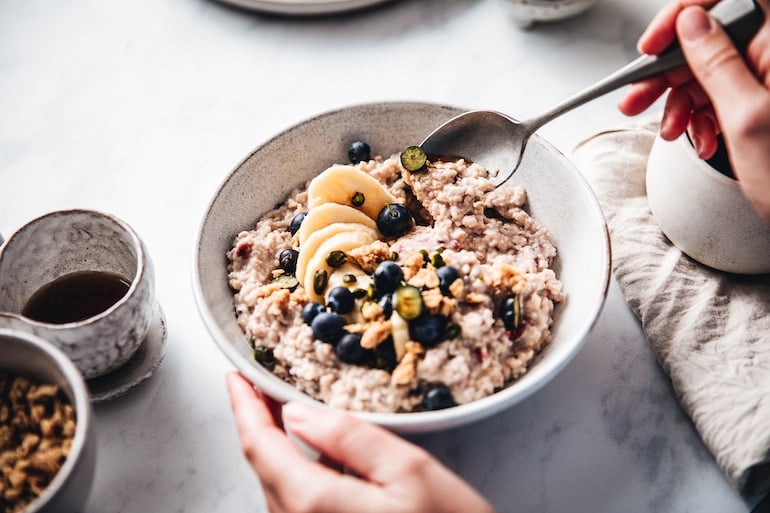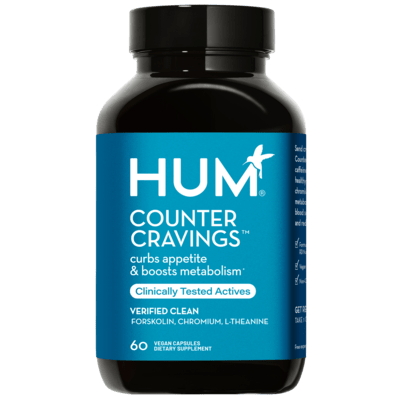The 80/20 Rule Is the No-Diet Diet of Your Dreams
The 80/20 diet is a balanced approach to eating that lets you still enjoy the foods you love. Gaby Vaca-Flores, RDN, HUM’s educational specialist, provides tips for applying the 80/20 diet rule.
If your goal is to lose weight, you might be tempted to start dieting. Maybe you’ve started (and quit) a restrictive diet for weight loss in the past. But, what if there was a way to lose weight and still eat the foods you love that is much easier to keep up with over the long term? That’s where the 80/20 rule comes in. The 80/20 rule can help you get closer to your goals without the restrictions that other diets may have.
What is The 80/20 Diet?
The 80/20 diet is a flexible style of eating coined by wellness expert and renowned chef, Teresa Cutter. Simply put, this diet claims that it is possible to lose weight if you eat healthy 80 percent of the time while giving way to foods often categorized as less healthy for the other 20 percent.
In the context of the 80/20 diet, healthy foods include fruit, vegetables, whole grains, and lean protein. Plus, unprocessed or minimally processed foods.
Naturally, the other 20 percent can look different for everyone depending on your personal food preferences. (Nachos, In-N-Out, your aunt’s infamous cheesecake? All of that is on the table during your ’20 percent,’ though of course, you’ll still want to be mindful of portion sizes.)
Benefits of the 80/20 Diet

For many people, the 80/20 diet provides freedom from restrictive eating habits. Not to mention, a flexible framework to help balance nutritious and indulging foods.
Weight loss
At the moment, there isn’t any research on the effectiveness of the 80/20 rule for weight loss. However, as an RD, one of my favorite aspects of the 80/20 diet is its emphasis on eating healthy most of the time, rather than all of the time. Taking this approach to lose weight can be very effective and sustainable.
In fact, researchers continue to find that diet plans that are less restrictive are more likely to help you lose weight and keep it off.
Simple-to-follow
Unlike many weight-loss plans, the 80/20 diet doesn’t require tracking calories, weighing your food, or purchasing any special products. Plus, it doesn’t have a long list of rules for you to follow. Keeping things simple makes it easier for 80/20 dieters to stay consistent with their eating plan.
Overall health
When it comes to being healthy, not all diets are created equal. Luckily, the 80/20 covers all of the fundamentals of a nutritious diet. Eating a diet that is rich in whole foods comes with many benefits beyond losing weight. With that said, you might notice improvements in your overall health such as:
- Good digestion
- Better mood
- More energy
- Healthier-looking skin
What Does the 80/20 Diet Look Like?

Planning an 80/20 menu is relatively simple. But, 80/20 can look a little different for everyone.
To help visualize what 80/20 can look like for you, start by identifying your eating style.
Some people prefer to follow the 80/20 diet with weekly cheat meals while others find it easier to have daily indulgences.
Week-long Approach
Do you enjoy an indulging meal rather than a dessert? Or, do you like eating out regularly? If so, then you should consider the 80/20 week-long approach.
To start, figure out how many meals you eat in one week. Most people eat three meals daily which amounts to 21 meals per week.
Then, figure out what 80 percent of that number is as this will be the number of nutritious meals you should eat in a week. For example, if you eat 21 meals weekly, you should plan to eat 17 nutrient-packed meals and four that are less healthful.
I highly recommend this approach for people with busy social calendars!
Day-long Approach
Cheat meals aren’t for everyone. Many people actually prefer having smaller, more frequent indulgences.
If this sounds like you, simply eat healthy 80 percent of your day (i.e., highly nutritious meals and snacks). Then, save the remaining 20 percent for a daily indulging treat.
Here is an example of what one day of eating can look like on the 80/20 day-long approach:
- Breakfast: Two hard boiled eggs with a side of steel cut oats and berries
- Lunch: Turkey burger served on a whole grain bun and a side of mixed greens salad
- Snack: A cup of greek yogurt with a side of fresh fruit
- Dinner: Chicken and brown rice stir fry with veggies
- Dessert: Dark chocolate almond butter cup
This approach may be better for people who typically give in to sweet cravings.
Drawbacks of The 80/20 Diet
Fortunately, there aren’t many drawbacks to the 80/20 diet.
The main drawback is that eating healthy 80 percent of the time doesn’t guarantee weight loss. This especially applies to people who already eat a fairly healthy diet. Shifting their eating habits to 80/20 won’t necessarily result in weight loss unless they are intentionally eating fewer calories.
Additionally, it can be very difficult for people to stay consistent with the 80/20 diet if healthier food options are not easily accessible.
Further, eating unhealthy 20 percent of the time can be open for interpretation. As a result, there may be some trial and error required to figure out what will help you be successful in your weight loss journey.
Remember, there is no one-size-fits-all diet, and the 80/20 plan is no exception. The 80/20 diet may not be for you if you:
- Already eat a balanced diet
- Already practice mindful or intuitive eating
- Are working towards establishing food freedom
- Need more structure in your diet
- Don’t have time to commit to meal prepping

Who Should Try the 80/20 Diet?
Since the 80/20 diet is grounded in balance, a variety of people can benefit from giving it a try, even if your goal isn’t to lose weight.
However, if you are trying the 80/20 diet to lose weight, here are some tips to keep in mind:
- Be mindful of your portions. Eating more calories than you burn, even if you are following an 80/20 ratio, can keep you from losing weight. On the flip side, eating too little calories can have detrimental effects on your overall health. You can learn more about general healthy plate portions here.
- Meal planning is key for success in the 80/20 diet. Make sure to have healthy meal and snack options available, or if possible, prepared ahead of time. This will help you stay on track, at least 80 percent of the time.
- Make adjustments as needed. If you find that you are maintaining or gaining weight, this can be a sign that your ‘20 percent foods’ may be too calorie dense. Modifying your portions or making a swap for a lower calorie treat can help.
Takeaway
The 80/20 diet is unlike most weight loss plans. It boasts flexibility by encouraging people to eat healthy most of the time while still making room for indulgences. While it’s not a guaranteed framework for weight loss, it can help teach people how to balance their diet in a way that’s nutritious, satisfying, and built for the long term, not just a quick fix diet.







